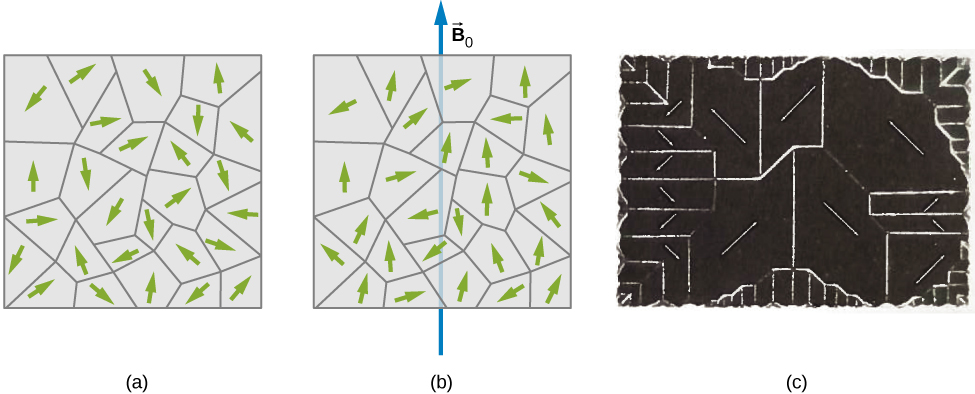| << Chapter < Page | Chapter >> Page > |
We can now describe the magnetic effects of diamagnetic materials with the same model developed for paramagnetic materials. In this case, however, the fictitious surface current flows opposite to the solenoid current, and the magnetic susceptibility is negative. Values of for some diamagnetic materials are also given in [link] .
Water is a common diamagnetic material. Animals are mostly composed of water. Experiments have been performed on frogs and mice in diverging magnetic fields. The water molecules are repelled from the applied magnetic field against gravity until the animal reaches an equilibrium. The result is that the animal is levitated by the magnetic field.
Common magnets are made of a ferromagnetic material such as iron or one of its alloys. Experiments reveal that a ferromagnetic material consists of tiny regions known as magnetic domains . Their volumes typically range from to and they contain about to atoms. Within a domain, the magnetic dipoles are rigidly aligned in the same direction by coupling among the atoms. This coupling, which is due to quantum mechanical effects, is so strong that even thermal agitation at room temperature cannot break it. The result is that each domain has a net dipole moment. Some materials have weaker coupling and are ferromagnetic only at lower temperatures.
If the domains in a ferromagnetic sample are randomly oriented, as shown in [link] , the sample has no net magnetic dipole moment and is said to be unmagnetized. Suppose that we fill the volume of a solenoid with an unmagnetized ferromagnetic sample. When the magnetic field of the solenoid is turned on, the dipole moments of the domains rotate so that they align somewhat with the field, as depicted in [link] . In addition, the aligned domains tend to increase in size at the expense of unaligned ones. The net effect of these two processes is the creation of a net magnetic dipole moment for the ferromagnet that is directed along the applied magnetic field. This net magnetic dipole moment is much larger than that of a paramagnetic sample, and the domains, with their large numbers of atoms, do not become misaligned by thermal agitation. Consequently, the field due to the alignment of the domains is quite large.

Besides iron, only four elements contain the magnetic domains needed to exhibit ferromagnetic behavior: cobalt, nickel, gadolinium, and dysprosium. Many alloys of these elements are also ferromagnetic. Ferromagnetic materials can be described using [link] through [link] , the paramagnetic equations. However, the value of for ferromagnetic material is usually on the order of to and it also depends on the history of the magnetic field to which the material has been subject. A typical plot of B (the total field in the material) versus (the applied field) for an initially unmagnetized piece of iron is shown in [link] . Some sample numbers are (1) for and ; (2) for and

Notification Switch
Would you like to follow the 'University physics volume 2' conversation and receive update notifications?